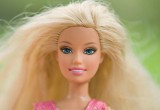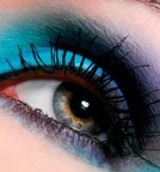Being bombarded by images of slim and beautiful people can damage children’s self esteem...
Our body image is the idea we have about how our body looks and how we think others perceive it. It is the mental picture we hold about our appearance and includes how we feel about the size, shape and weight of our bodies. We’ve all heard about stunning super models who have a poor body image; anyone, of any physical description, can have a positive or negative body image. These feelings and attitudes about our appearance are closely connected to our self-esteem and how we feel about our whole selves. Feeling positive about your body improves your outlook and how you interact with others, and gives you the freedom to approach new challenges and experiences. It is fundamental to our emotional well-being that we feel content about how we look and have a healthy body image.
 We live in a society where images of slim and beautiful people are used to sell everything from shampoo to pop songs. One glance at the magazine racks in any newsagents tells us how image conscious and celebrity obsessed we have become. Pop videos, adverts, social network sites, television and computer games all promote the message that our society values people with flawless good looks. Many studies show that looking at slim, beautiful models has a negative effect on our body image.
We live in a society where images of slim and beautiful people are used to sell everything from shampoo to pop songs. One glance at the magazine racks in any newsagents tells us how image conscious and celebrity obsessed we have become. Pop videos, adverts, social network sites, television and computer games all promote the message that our society values people with flawless good looks. Many studies show that looking at slim, beautiful models has a negative effect on our body image.
A young girl growing up nowadays will see more images of physically perfect people in one day than her grandmother would have seen throughout her entire adolescence.
 When we are bombarded with these pictures, many of which are airbrushed and unreal, it has the effect of making exceptional good looks seem normal, real and achievable. Many compare themselves to these images and feel inadequate and unhappy because they don’t measure up to these high and unachievable standards.
When we are bombarded with these pictures, many of which are airbrushed and unreal, it has the effect of making exceptional good looks seem normal, real and achievable. Many compare themselves to these images and feel inadequate and unhappy because they don’t measure up to these high and unachievable standards.
Body image has often been associated with teenagers – but we now know that this is becoming a concern for younger and younger pupils. Today’s children spend an average of six hours a day on screens. They don’t have the cognitive ability or emotional maturity to moderate or filter the constant media messages they receive. Studies show many primary aged children, both boys and girls, are developing a negative body image and the statistics should concern us all:
 • Three quarters of 10 and 11 year olds would like to change their appearance
• Three quarters of 10 and 11 year olds would like to change their appearance
• Girls as young as six are cutting down on what they eat to stay ‘skinny’
• One in eight girls aged 10 would like to be thinner
• By the age of 10 a third of girls and 22% of boys cite their body as their main worry
• Children as young as eight are battling eating disorders
By mid childhood, concerns about appearance, weight and dieting are the norm, especially for girls. Positive intervention to help children to develop a healthy body image cannot be left until the teenage years, it has to begin in the primary school.
You might argue that this is the parent’s responsibility and feel that teachers have enough to do already. However, if we ignore them, anxieties about body image can develop and escalate - they are strongly related to childhood depression, anxiety and eating disorders. Children’s ideas about themselves, their bodies and their place in society are forming. We must ensure that their development is not limited in any way by the relentless and unrealistic media messages about beauty and the ideal body. We need to help them to deal with the pressures they face by introducing the topic of body image in the classroom. Having a healthy body image is a prerequisite for children’s emotional health and their ability to fulfil their potential.
 Teachers can feel uncertain about how to broach the sensitive issue of body image in the classroom. A big emphasis on food, diet or healthy eating can be unhelpful in the context of discussing body image. This could encourage vulnerable children to focus too much on eating issues. Research shows that the best way to cover the topic is to use a self esteem approach which focuses on celebrating everyone’s unique skills and qualities. As well as thinking about their outward appearance children need to reflect upon who they are on the inside They should be encouraged to value their own and others’ individuality. They can think about who they look like in their own families and what other talents, skills and qualities they inherit from family members. They need to be helped to see that their image is just one part of who they are and think about all those other aspects of being human that we value. Older pupils need to begin to discuss the pressures they might face to look a certain way and think about who influences them. They can start to examine some of the messages they receive from advertising, the internet, magazines and television. They need to discuss together how they might resist these pressures, and support each other. They should be given plenty of opportunities to share their own values, beliefs and experiences. Circle time provides an ideal venue for many of the discussions. A variety of fun and interesting activities in art drama and literacy lessons should engage all the pupils, they usually relish the opportunity to discuss their modern world and we can often learn a great deal from them!
Teachers can feel uncertain about how to broach the sensitive issue of body image in the classroom. A big emphasis on food, diet or healthy eating can be unhelpful in the context of discussing body image. This could encourage vulnerable children to focus too much on eating issues. Research shows that the best way to cover the topic is to use a self esteem approach which focuses on celebrating everyone’s unique skills and qualities. As well as thinking about their outward appearance children need to reflect upon who they are on the inside They should be encouraged to value their own and others’ individuality. They can think about who they look like in their own families and what other talents, skills and qualities they inherit from family members. They need to be helped to see that their image is just one part of who they are and think about all those other aspects of being human that we value. Older pupils need to begin to discuss the pressures they might face to look a certain way and think about who influences them. They can start to examine some of the messages they receive from advertising, the internet, magazines and television. They need to discuss together how they might resist these pressures, and support each other. They should be given plenty of opportunities to share their own values, beliefs and experiences. Circle time provides an ideal venue for many of the discussions. A variety of fun and interesting activities in art drama and literacy lessons should engage all the pupils, they usually relish the opportunity to discuss their modern world and we can often learn a great deal from them!
Of course it’s imperative that the teacher creates a safe ethos in the classroom where pupils feel able to discuss their views, worries and concerns. As adults we are all susceptible to media messages. Teachers need to think about whether they communicate any of their own body image concerns to the children. We often tell pupils that it doesn’t matter how we look – ‘it’s what’s on the inside that counts’ but then spend a large amount of time criticising our own bodies or fixating on weight and constantly dieting.
 In every class there will be children who are particularly vulnerable. A body image project which focuses on self- esteem is appropriate for every pupil and can be of particular benefit for those who have anxieties. Children can focus on their strengths, receive support from their peers, and appreciate that others have worries too. Studies show that a critical time for children to develop an unhealthy body image is around the age of 10 so work done at this stage is particularly valuable. Pupils should know where they can get support if they have any concerns that they wish to discuss privately. If any pupil seems particularly preoccupied with their appearance, or withdrawing from social contact, is reluctant to undress for P.E., or showing signs of unhealthy eating patterns then this needs to be discussed with their parents or carers who should seek advice from their family doctor.
In every class there will be children who are particularly vulnerable. A body image project which focuses on self- esteem is appropriate for every pupil and can be of particular benefit for those who have anxieties. Children can focus on their strengths, receive support from their peers, and appreciate that others have worries too. Studies show that a critical time for children to develop an unhealthy body image is around the age of 10 so work done at this stage is particularly valuable. Pupils should know where they can get support if they have any concerns that they wish to discuss privately. If any pupil seems particularly preoccupied with their appearance, or withdrawing from social contact, is reluctant to undress for P.E., or showing signs of unhealthy eating patterns then this needs to be discussed with their parents or carers who should seek advice from their family doctor.
Of course parents are the most important influence on their children at this stage and they need to be involved in any work done in school. Nearly nine out of 10 of parents believe that children are under pressure to grow up too fast and many are looking for advice and guidance about how they might address this issue at home.
We want our children to feel good about themselves through their talents, qualities and achievements rather than because of their appearance. Despite recent concerns about our highly sexualised society, and calls to restrict some of the messages our children receive, it is not possible to regulate all aspects of the media. We therefore need to equip our children with the strengths and confidence they need to navigate their way through our modern world. Primary school is the ideal place to do this. If we can help them to look at the media with a critical eye, and accept themselves on their own terms we will be placing them in a far stronger position to resist the pressures they all face in their everyday lives.
 Lessons that raise children’s self-esteem…
Lessons that raise children’s self-esteem…
Nicky Hutchinson and Chris Calland are behaviour specialist teachers working Bristol. They also run an educational consultancy (notjustbehavior.co.uk).
They wrote their new book, Body Image in the Primary School (Routledge, 2011, ISBN 978-0-415-56191-4) because so many heads and teachers were expressing their concerns about this issue and asking for support. Their book is the only one that addresses body image for those who teach primary aged children. It demonstrates a practical range of activities and projects for teachers to work with, designed to make them confident in discussing body image in the classroom.
 The book offers
The book offers
• Step-by-step lesson plans including learning outcomes, for KS1, KS2 and the transition to KS3
• Analysis on the changing social influences of home life peer pressure and the media
• Practical guidance on how to support parents and carers
• Overviews of research on the links between body image, academic achievement and emotional well-being
Share these tips with parents and carers…
• Talk positively about your child recognising their skills and qualities
• When you watch television or look at magazines with your child help them to question the images that you see
• Be active as a family. Emphasise fitness and fun as the motivation rather than weight loss
• Sit down together as a family to make meal times a social happy occasion
• Be aware of what your child is accessing through their computer or mobile phone
• Don’t complain about your own weight and appearance or at least don’t share those opinions with your child
• Don’t over-emphasise the importance of looks
• Don’t make negative comments about your child’s weight or appearance
• Be aware that teasing can have a negative effect on body image
• Don’t crash diet or encourage your child to diet
How children react to a moral dilemma may be down to your teaching
Ace-Classroom-Support
